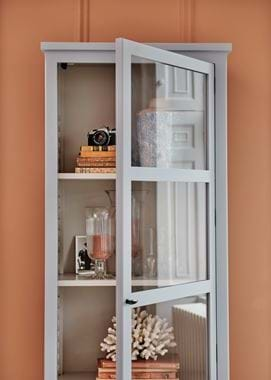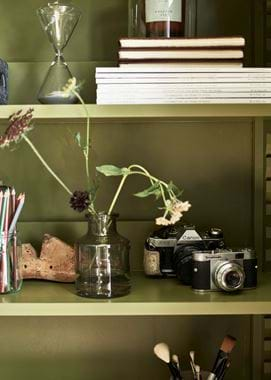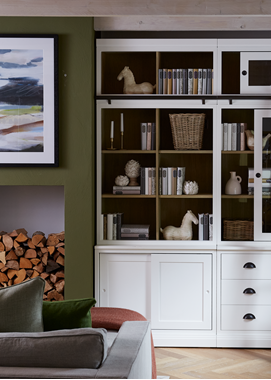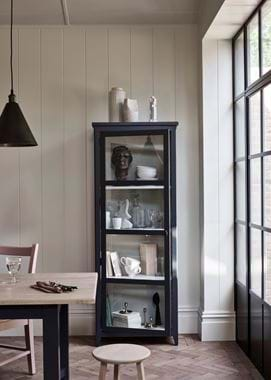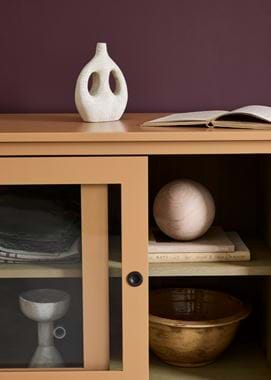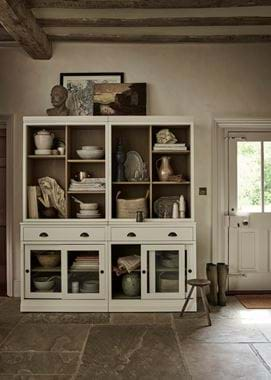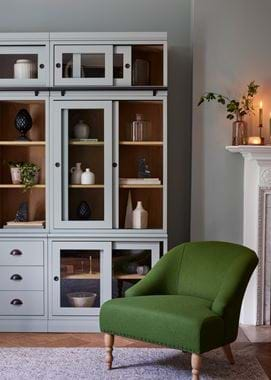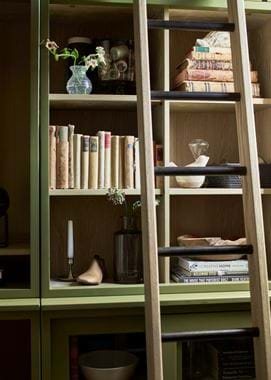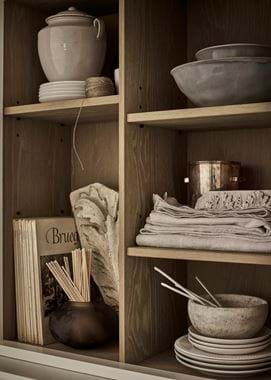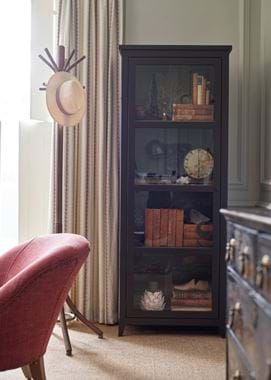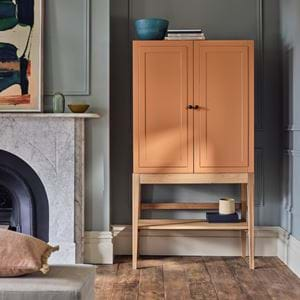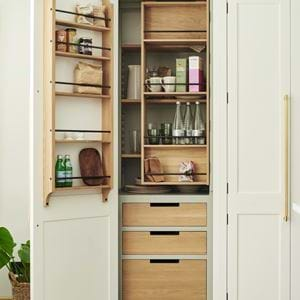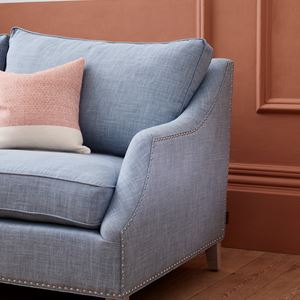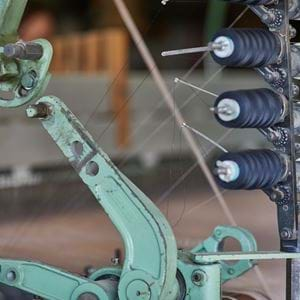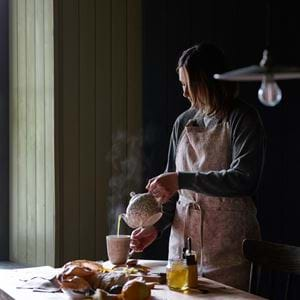Curiouser and curiouser: creating a curiosity cabinet
Curiouser and curiouser: creating a curiosity cabinet
Have you ever been to Snowshill Manor in Gloucestershire? You’d certainly remember it if you have – there’s nowhere quite like it. Once home to the (rather eccentric) Charles Wade, it’s a place of pilgrimage for collecting. Every room, every wall and surface, is home to one of Wade’s many, many collections. Everything from bicycles to snuff boxes. It’s a joyously overwhelming space in which to be.
Most of us can’t let our appetite for collecting run quite so freely though (Wade eventually moved into a small cottage in the garden, leaving the manor over to his collections), which is where the curiosity cabinet comes in. Not so long ago considered stuffy, formal and decidedly old-fashioned – to keep a collection behind glass doors – the tide has since turned. Today’s decorating styles embrace personality (wall-to-ceiling bookcases, open kitchen shelving and the penchant for Bloomsbury-style decorative painting are all case in point) and the curiosity cabinet goes nicely along with that by creating space for personality but keeping it ordered and contained.
According to Gestalt psychology, we naturally perceive similar objects (when they’re grouped together) as one whole. Like the leaves on a tree, for instance, or the bricks in the wall of a house. It’s how our brains make sense of all the visual information sent to them. And we’re rewarded with feelings of joy for this continued ability to make connections. It’s why we find groups of things so pleasing, like jars lined up on a shelf or cutlery organised by type in drawer dividers. A curiosity cabinet is a delightful thing because it creates harmony in a collection, even if that’s a collection of seemingly disparate objects. It’s why larders and dressers are high on wish lists too. (Slightly more prosaically, part of the appeal of curiosity cabinets is that they also keep your collection dust-free. In a world where we’re more and more conscious of cleanliness and air quality, it’s no surprise that glass-fronted cabinets are slowly creeping back to take over from open shelving again.)
So, how to make the most of your curiosity cabinet? Well, having chosen the cabinet in question – our Shepton and Chawton designs make good candidates – start by making groups. Things don’t have to be as ordered as a museum display cabinet, but arranging your curiosities in little sets will tap into that sense of harmony our brains enjoy so much. A set of six glasses here, a small pile of books there, a jarful of collected pebbles and a trio of handmade dipping bowls. They don’t need to be groups of identical objects, but some similarities will help make those connections. Glassware in different styles but the same colour, for instance. Pebbles in every shade of white and grey but all of a similar rounded shape (look to Kettle’s Yard to see what we mean).
Next, decide whether you want your curiosity cabinet to be a minimalist or maximalist space. Both have their merits: the former taps into a need for order and balance, the latter into the pleasure in abundance. If you’re torn, let your collection guide you. If, like Nigel Slater and his ceramics, yours is a singular collecting passion, you’ll probably fall into the minimalist camp. If, like Charles Wade, your collecting habits are wide and varied, embrace maximalism and create a cabinet that reveals new delights every time you peer in. Incidentally, you can also bridge the gap between these two styles with a collection of a singular object or type of object arranged en masse – picture the impact of a cabinet filled to the brim only with pure white ceramics.
Finally, a parting word: enjoy the process. Open the door occasionally to spend time with your collection. Rearrange it regularly. Take pieces out now and then to place them on a bedside or desk or in your pocket where you can appreciate them individually. Even use some of them. Don’t let the curiosity cabinet fall back into its stuffy old ways.
If you’d like to create your own curiosity cabinet, start by exploring our storage collections. Or, head to Instagram where our stylist, Ailie, has shared her tips for putting together a display.

